… is right twice a day. So I confess, with a shudder but of my own volition, that I agree with the Fox News decision to publish “Healing the Believers’ Chests,” the complete 22:34-minute ISIS video of the burning alive of captured Jordanian pilot Muadh al-Kasasbeh. I watched it there — not for thrills, but because (a) as a citizen of the country that ISIS has declared its mortal enemy I want to know the threat that confronts us, and (b) I feel obligated as a critic to actually experience work in its entirety, no matter how difficult its content, before considering and commenting on it.
I don’t recommend watching it to all my readers, nor to anyone else. If you do watch, be advised that the actual execution begins at timestamp 18:00, and you’ll want to skip to timestamp 19:30 to avoid it.
My overall impression is that this video is extremely well-made, put together in a definitely sophisticated way from the standpoint of editing, sequencing, graphics, still and video imagery, and on-screen text. At the same time, though anything but primitive, its production values stay modest enough to not overwhelm the viewer with special effects or other tech glitz — to not seem enamored of the tech itself, western-fashion. I don’t have enough expertise to identify the tools involved, but I’d guess its image components were all made with consumer-end digital cameras; as a finished video production, I believe it could have been achieved entirely within Final Cut Pro, possibly even within iMovie.
Because the on-screen text and audio are all in Arabic, with no English-language subtitles, I have to guess at the content to a certain extent. (I invite any Arabic speaker among my readers to confirm or correct my analysis.) With that said, its structure, graphics, still and video components, and other elements employ standard, even classic international tropes of film/video news reportage and documentary. That leaves me reasonably confident that I have a basic understanding of its narrative, its strategies, and its argument.
Effectively, as I read it, this video is a prosecutorial indictment of Muadh al-Kasasbeh and, with him as the example, of the West’s war on Islam (as ISIS sees it) — led by the U.S. as the Great Satan — and a condemnation of the participation therein of assorted western nations and various majority-Muslim countries as well. To establish this backstory, the film opens with brief video clips of assorted world leaders shaking hands and otherwise demonstrating their alliances — a macro view of the geopolitics involved, if you will.
Carefully, step by step, it narrows its focus, zooming in on the Middle East, indicating which nations have been involved in attacks (especially air strikes) against ISIS-held territories. Jordanian complicity with the infidel west in these efforts becomes clear. The imprisoned pilot, with one eye blackened (from his crash-landing? from a blow?), sits alone a table, acknowledging his involvement in specific air strikes; the locations thereof are shown, with brief, grisly clips of the ostensible aftermaths, emphasizing injuries to children, seen through a montage of flame.
Having confessed his guilt, and most likely also having spoken of relevant Jordanian Air Force policies and practices, al-Kasasbeh is taken to what purports to be the scene of one of those air strikes, to witness it at first hand. (Most likely Raqqa, where ISIS downed his plane.) The setting, a relentless and unforgiving scape, has a raw, sun-blasted aridity, made more desolate by the destruction all around.
In a bright orange prisoner’s jumpsuit, perhaps chosen to evoke the U.S. treatment of Muslim prisoners at Abu Ghraib and Gitmo, al-Kasasbeh stands out vividly amidst the muted earth tones of his surround. He is made to walk through the devastation he helped to wreak and is then locked in a metal cage, as ISIS troops in full uniform, with balaclavas and guns, stand by silently, bearing ominous witness.
The setting, cinematography, action, and pacing all have a distinct Sergio Leone-like “spaghetti eastern” quality — an atmosphere of grim, implacable inevitability hovers over the proceedings. It comes as no surprise, then, to see al-Kasasbeh’s onesie damp with some fluid; a line of some dry, implicity flammable substance running from perhaps ten yards away right into his cage; and an ISIS soldier standing by with a torch.
Nor does it surprise the viewer when that torch gets lit and applied to the fuse, its flame running quickly into the cage, where it subjects al-Kasasbeh to a punishment presumably comparable to what his “collateral damage” victims suffered. In the west, we’d call this eye-for-an-eye treatment biblical; no doubt its rough justice qualifies as koranic.
Al-Kasasbeh’s incineration is well-filmed — shown from different angles, from bird’s-eye view to close-up. Horrific, to say the least; we see the flesh dripping from his bones. The video does not linger on it; from the moment the flame engulfs him to the moment when, after falling to his knees, his charred body falls over backwards as a backhoe looms into view, its scoop filled with the rubble he presumably helped create, takes only 80 seconds. The backhoe dumps its load onto the stilll-burning cadaver, then flattens rubble, cage, and corpse alike, extinguishing the blaze; the last shot shows Al-Kasasbeh’s blackened fingers poking through the crushed concrete.
The film ends with ID photos and names of other Jordanian pilots and an offer of reward for their capture — clearly the threat of a similar fate if caught.
This is a very sophisticated, persuasive piece of documentary filmmaking and/or propaganda. It uses a narrative structure and style familiar to just about anyone who has ever watched a TV news program or broadcast documentary film anywhere in the world. I find it ironic — perhaps ISIS intends it so — that the global dissemination of that characteristically western form of communication, which has served to transmit western values to cultures where they’re not automatically welcomed by all, has attracted and trained audiences worldwide to read such presentations. In short, ISIS here makes its case for this auto-da-fé using the west’s own mass-media techniques and rhetorical tactics to hearten its followers, entice its prospective supporters, and warn its enemies everywhere.
(Note: Fox news and others have incorrectly identified Muadh al-Kasasbeh as a “hostage.” As a Jordanian pilot, he was by definition a prisoner of war.)
•
In John Le Carré’s 2008 novel A Most Wanted Man, one of his characters, a Muslim expert on Wahhabism, says of moderate Muslims,
“They know the arguments [against terrorist action]. But in their heads … they consider them unresolved. They have a place for terror in their minds and it is not an entirely negative place. They regard it … as a painful but necessary tribute to the great diversity that is the Umma. … For are not all true believers looking for the right path? And are not God’s commands difficult to comprehend?”
As an equal-opportunity infidel, I find all religious belief systems ridiculous and benighted, making no exception for Islam. I do not buy the liberal-humanist cant mouthed by everyone from George W. Bush to Barack Obama to Ben Affleck, about how Bin Laden or the Taliban or Al-Qaeda or Boko Haram or ISIS or any other jihadists have “hijacked one of the world’s great religions” because what they believe and practice is a perversion or distortion of Islam so extreme that it doesn’t qualify as Islam.
To the contrary, from evidence such as this video and the passages of the Koran, the Hadith, and other Islamic texts I’ve read, I’ve concluded — along with Graeme Wood (see his March 2015 analysis, “What ISIS Really Wants,” in The Atlantic), Sam Harris (see this lecture, based on his 2013 book The End of Faith), and numerous other analysts — that radical fundamentalist Islam represents at least a true face, if not the only true face, of Islam.
In this video, fundamentalist Islam itself wears no balaclava. If you want to know it, look it in the face.
Photography for Dummies
Earlier this year I wrote about the Australian photographer Peter Lik, theretofore unknown to me, setting a $6.5 million USD record price for sale of a single photographic print.
Reading further about Lik has felt like stepping into some parallel universe:
• “Is That $6.5 Million Photo Sale for Real? Probably Not!” by Sarah Cascone, Artnet News, December 12, 2014.
• “Peter Lik’s Recipe for Success: Sell Prints. Print Money,” by David Segal, New York Times, February 21, 2015.
• “Photographer Peter Lik Is Listing in Maui for $19.8 Million,” by Stefanos Chen, Wall Street Journal, February 18, 2015.
• “New York Times Exposes Peter Lik Photography Scheme,” by Sarah Cascone, Artnet News, February 23, 2015.
• “Photographer Peter Lik Lists Maui Home for $19.8 Million, More Than Twice What He Paid,” by Sarah Cascone, Artnet News, February 24, 2015.
Yet all this takes place in our world, though a very different corner thereof. From the reports above, and his own website, I gather that Lik owns and operates 11 galleries throughout the U.S. devoted exclusively to the sale of his humdrum, generic landscape photographs — most of them in color, most of them panoramas, made with both analog and digital cameras. His production crew prints them (usually) in editions of 995, the prices starting around $4000 and rising incrementally as the editions sell out; the final few can go for $200,000 or more.
They sell primarily to the moneyed tourist trade in places like Maui and Las Vegas — people who know little about photography, less about art. And nothing at all about the art market, specifically the secondary market, where Lik’s work has practically no resale value, in part because he’s flooded the market with prints.
Via this system, his business manager claims, Lik has sold 100,000 prints for a total of $440 million dollars. Alas, that has had no trickle-down effect for other photographers’ sales; this tide rises only for Lik’s boat.
When I think about what that money would mean to the field of serious creative photography, it boggles my mind. Too bad, I say to myself, that all those people buying Lik’s decorative junk don’t know about the no less beautiful but much more resonant work they could buy for just a fraction of what they’ve spent on Lik’s prints, and then live with something that stands a better chance of increasing in value as an investment to boot.
But that would take several generations of knowledgeable, committed critics ready, willing, and able to write accessibly enough that they could engage those buyers, make photography and its field of ideas interesting to them, and educate them as to the difference between Lik’s wall accessories and photographic work with some meat on its bones. Fat chance of that happening, right?
Location, Location, Location
Jay Maisel hasn’t made nearly as much money as has Lik from the sale of his prints, but he’s right up there in the real-estate competition. In fact, he’s well ahead of Lik: Maisel’s 190 Bowery home and studio for almost half a century — the former site of Germania Bank — just sold for $55 million to art collector and real estate financier Aby Rosen, who chairs the New York State Council on the Arts (NYSCA). Maisel bought it circa 1966 for a reported $102,000.
This is the same graffiti-covered 1898 building that became the target of trolls and webweasels when Maisel had the temerity to defend his copyright for the image of his used on the cover of the classic 1959 album Kind of Blue.
Speed Dating for Photographers
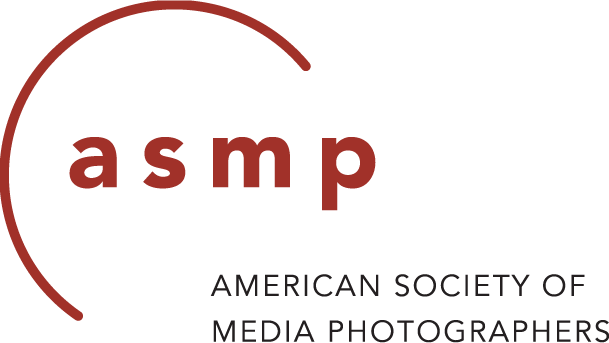 Partly as a way of tithing to the field, and partly to get myself out of the house during this prolonged deep freeze in NYC, I accepted — not for the first time — Susan May Tell’s invitation to participate in the 10th Portfolio Review of the New York Chapter of the American Society of Media Photographers (ASMP NY) on the evening of February 18th. This free annual event is exclusively for ASMP members, most of them local; Tell serves as ASMP NY’s Fine Art Chair and the producer of the review.
Partly as a way of tithing to the field, and partly to get myself out of the house during this prolonged deep freeze in NYC, I accepted — not for the first time — Susan May Tell’s invitation to participate in the 10th Portfolio Review of the New York Chapter of the American Society of Media Photographers (ASMP NY) on the evening of February 18th. This free annual event is exclusively for ASMP members, most of them local; Tell serves as ASMP NY’s Fine Art Chair and the producer of the review.
While most portfolio reviews in which I’ve participated involve 20-minute one-on-one sessions, the ASMP NY version cuts that in half, down to 10 minutes — turning the basic cold-call aspect of this exchange into speed-dating for photographers and reviewers. Like “the prospect of being hanged,” to use Samuel Johnson’s memorable image, this truncation “focuses the mind wonderfully,” minus the anxiety. I found the quality level heartening: of the approximately one dozen presentations I saw, I considered half fully realized and substantial, the others promising.
Here’s Frank Rocco’s group portrait of the reviewers, just minutes before the review began on the 18th. I’m in the middle — bluejeans, dark blue sweater, white hoodie over my shoulders, standing just behind Tell and Alice Zimet, to the left of Amy Arbus:
As I’ve noted previously in discussing the portfolio review as a system, no other medium offers anything comparable, so far as I know; it’s unique to photography. Unlike many of my fellow reviewers (gallerists, curators, publishers, editors, collectors) I’m not scouting for new work to incorporate into my own projects. So I get from it just some sense of what a certain cross-section of photographers have committed themselves to. By the same token, I have nothing to offer the reviewees — no opportunities of any kind — save for my feedback and advice.
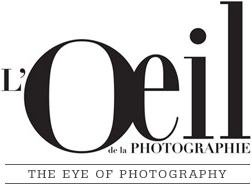 The website The Eye of Photography (L’Oeil de la Photographie), a daily edited and published by Jean-Jacques Naudet, has put a story about the review and all the portfolios online, including those nominated for special attention by the reviewers. To see my choice (and Elizabeth Avedon’s), Yoav Friedlander, an Israeli now based in Forest Hills, Queens, NY, click on his name, immediately above.
The website The Eye of Photography (L’Oeil de la Photographie), a daily edited and published by Jean-Jacques Naudet, has put a story about the review and all the portfolios online, including those nominated for special attention by the reviewers. To see my choice (and Elizabeth Avedon’s), Yoav Friedlander, an Israeli now based in Forest Hills, Queens, NY, click on his name, immediately above.
I’ll do this again, later this spring, at Photolucida in Portland, OR. See you there, perhaps.





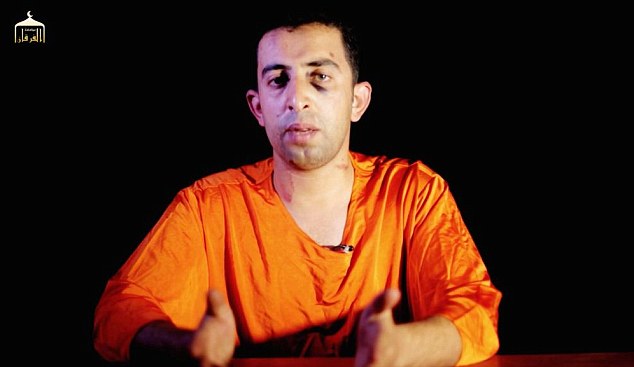




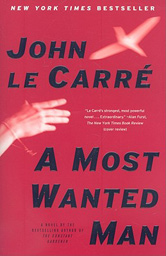

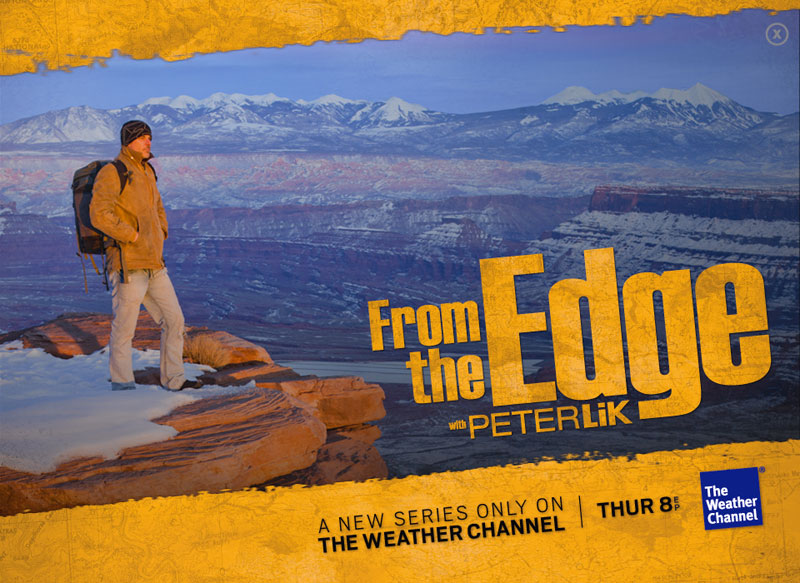

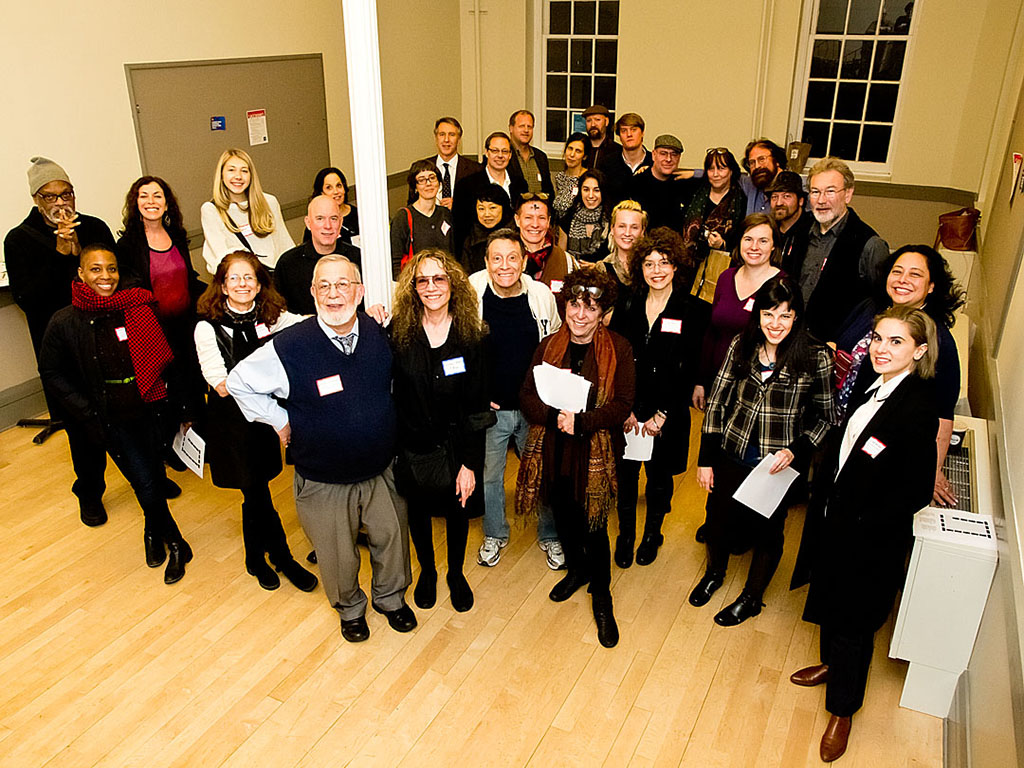




Allan:
Sitting in a hotel getting ready for the opening of my “Lustron Stories” exhibit in Louisville and catching up on emails.
Peter Lik has a lovely gallery in the heart of Key West from which, I suspect, he does just fine. His success picks at a scab that lingers in photography, the idea of being a professional. Every professional photographer thinks they are an artist. Everyone making art full time (which almost universally means they pay their bills some other way) considers themselves a professional. Lik is the consummate professional providing a skill-based product for compensation. His customers would not spend $4000 on one of my portraits of the owner of an all-steel house when they could buy something far more decorative from Lik. His profession is just a lot more lucrative than mine. In a world where the head of the electric company makes $20 million a year for having a pleasant personality, Lik is just more proof that money is not the measure of all things (with apologies to Bishop Berkeley).
Best,
Chuck
I don’t actually begrudge Lik making his potload of money. I agree with you: He’s handled it as a business, from sales and pricing to marketing and promo.
My point: there’s a lot of work out there no less “decorative” than Lik’s — however we might choose to define “decorative” — and even “sofa-sized.” Work that, in addition to “holding the wall,” as they say, has a lot more substance. And can be had for what people pay for a Lik print, or considerably less, in much smaller editions. At least some of which has a good likelihood of increasing considerably in value over the years, making them genuine sound investments — unlike Lik’s prints, which he himself likens to a new Mercedes that loses a serious chunk of its value as soon as you drive it off the lot.
The people who buy Lik’s prints don’t know any of that. One reason, as you imply, is that creative photographers haven’t promoted themselves and their work as savvily as Lik. I don’t disagree. But a second reason is that the pipeline through which information and engaging commentary about that work might reach such buyers — general-audience magazines and newspapers — don’t publish much about it, in part because few critics concern themselves with speaking to and educating those audiences. Alas.
I enjoyed your ‘bits and pieces’ more so than anything else I have received from you. Sometimes you write about topics that do not interest me. I guess the ‘mix’ has more of a chance of touching topics that do interest me.
Maybe ‘enjoyed’ is not the right word for the rundown of the burning of the pilot. But, if it was not for your thoughtful reportage I would not have known all the details. I try to avoid seeing too much of that type of thing nowadays. When I was young, I may have found some thrill by seeing torture, but as one ages the mind gets filled up too many ugly things that haunt the person. The end result is it can destroy one’s peace…or what little peace one can maintain in our stressful world.
I had made the mistake of watching some killing videos of narco gangs last year. In then them hack away limbs from live victims with an ax or machete or hacksaw the head off a man hanging upside downs. Their calling card is to leave skinned heads in grisly piles in the floor. I had heard about the wars between gangs and wanted to see what it was all about. I still get haunted by the images.
In any case, you gave a vey balanced reportage on the pilot burning…Thank You!
Yes, a very, very, very small amount of the money Lik makes would be most welcome when it comes to producing my photography. Unless you have deep pockets, money is always an issue with any photographer. Still, many of us broke photogs and artists keep producing with or without any support.
I had a big project to shoot last year. I knew one institution that had some of my work in their collection would be interested in the photographs. I asked if they could give me $200 to $300 to help me with a project. (About 10% of the projects budget.) They declined to help. I still ended up donating the photos that came from the project to them. My placement was not dependent on $ help. I was just looking for some extra $ for food and to help me stay an extra day or so to shoot.
That was the only time I ever asked an institution for $.
I guess I’m way behind the times when it comes to raising $ with my photography. When I travel I never eat out. I eat in my room with supermarket food or food I bring with me. I stay in cheaper hotels. My photography is 100% self funded. I’m not rich. I don’t make any $ from my work. As such, I have lots of limits when it comes to my projects due to $. But, I never got into photography for love of money – I do it for love of freezing time.
If I had lots of dough, no doubt my photography would have many more opportunities for expansion. In any case, I just have to work with what I can do comfortably within my budget. I’m lucky that I do have enough money to pursue some of what is in my head. Raising money is not free either. It takes a piece on one energy and peace to raise money. I prefer not having to answer to anyone dangling a carrot in front of me when it comes to my work. Still, money is a very important part of producing no matter how you slice it.
Nowadays, photogs as well as artists are stressed out trying to get attention for their work. All the while the market is polluted with so many images no one person could possibly look through them even part of them in a lifetime.
Pretty pix are a dime a dozen…or even free.
http://www.amazon.com/Sunrise-around-world-Photo-Gallery-ebook/dp/B00ROCZ2JG/ref=pd_sim_sbs_kstore_9?ie=UTF8&refRID=16FNDDPK30NZ1MN5T7FJ
http://www.amazon.com/Spectacular-Mountain-Lakes-Photo-Gallery-ebook/dp/B00QU1H3NK/ref=pd_sim_sbs_kstore_4?ie=UTF8&refRID=0GHX6N388YGCDGWS8V3J
Lik just figured out how to make lots of money from his work instead of pennies.
It would be nice if Lik will used some of his riches to create a foundation to give grants to struggling phoogs out there for worthwhile projects.
But, none of this matters much if your dedicated to freezing time or producing art. Whether you have an outlet or make $ with one’s art or not…if it is in your blood, you must produce and keep producing. Don McCullin complained about this same issue in the 1981 book World Photography by Bryn Campbell. McCullin talks about his need for making ‘strong photos’ to distinguish himself from the crowd. He mentions the competition being next to nil in his field of war photography, then one day he finds himself in a room filled with hundreds of correspondents.
…just keep pressing the button.
Re the content of this blog: As Ricky Nelson sang, “You can’t please everybody, so you better please yourself.”
Great post!! Considering the fact that “Jihadi John” is a well educated computer techie from London, an intimate knowledge of western tabloid journalism and mass media communications is now embedded in ISIS’s mainframe management structure; as well, it’s leadership consists of former Saddam Hussain school of torture graduates. They know full well both sides of the playing field and can punt from mid-point in both directions.
The use of Islam’s mythic world view is as much a media ploy as is the graphic rituals of execution. One could say that our western mass entertainment culture exploiting fake visualizations of death, abuse, war, and ultimate destruction has now come back to haunt us with a form of reality only the Knights Templar would comprehend.
To think that there are plenty of Americans already committed to their own bizarre, and well advertised, version of “The End Times” and Armageddon part and parcel of this whole sick scenario. Actors, Enablers, Victims.How do you separate them at this point?
As to Peter Lik – I first heard of him on the cable show “Pawn Stars” last season, when a guy tried to sell a print at the pawn shop (in Vegas mind you). I was scratching my head as they negotiated a price for this supposedly “world famous” landscape photographer I’d never heard of. The blk & wht shot was generic as anything found in an ordinary photo bank. To pay many thousands of $$ for such a banality makes sense ONLY in the context of gamblers blowing windfall cash on non-traceable bling. Kinda like when Michael Jackson blew $500K on supposed “antiques” (of obvious zero value) at the casino where he was appearing.
At least the pawnbroker was expecting to flip the photo ASAP to anyone who had already seen the artist’s prices and would think it a bargain. P. T. Barnum must always be quoted in these contexts!
Thanks for the input. Re the Peter Lik print: the episode in question is “Pawn Stars,” Season 3, Episode 7, “Chumlee’s Dummies,” originally broadcast on June 28, 2010. The work in question: a signed and numbered print of Lik’s photo “Beyond Paradise.” I can’t access it, but sounds like fun.
Actually, it wasn’t Barnum who said “There’s a sucker born every minute.” It was a banker named David Hannum, head of a five-man syndicate that got conned into buying the Cardiff Giant, a fake “fossilized human” supposedly from ancient times, a hoax cooked up by one George Hull, of Binghamton, New York. Unaware that the gypsum carving they’d purchased from Hull in 1869 — for a whopping $30,000, a fortune in those days — was bogus, his syndicate sued Barnum, who had had his own version of the Cardiff Giant made and displayed it, claiming that he’d purchased it from the Hannum group and that Hannum was showing a fake! That’s when Hannum made his comment about suckers. The truth came out during the trial. For the full story, click here.
Dear AD
I am truly glad you wrote about this, I hadn’t been paying attention, and your perspective is one I know to trust. Thank you for all you do.
Yours always
Little photo metro
Jo’s daughter